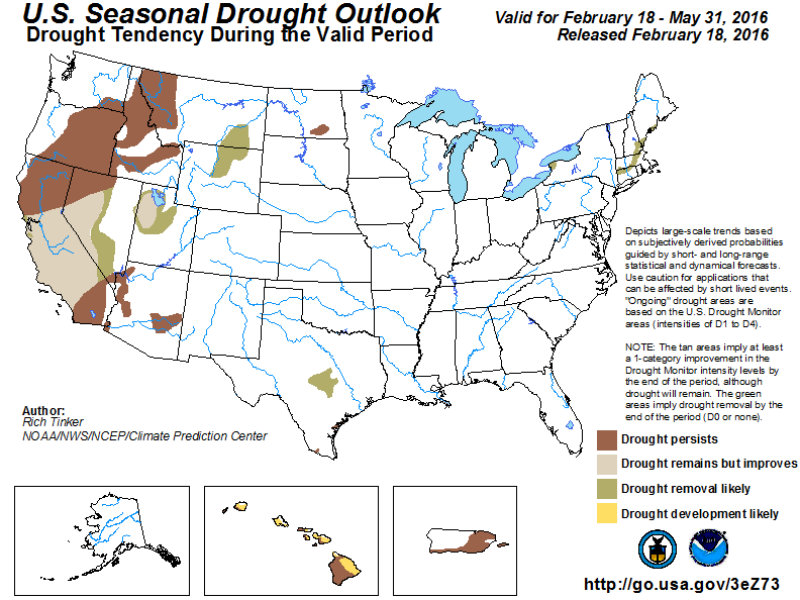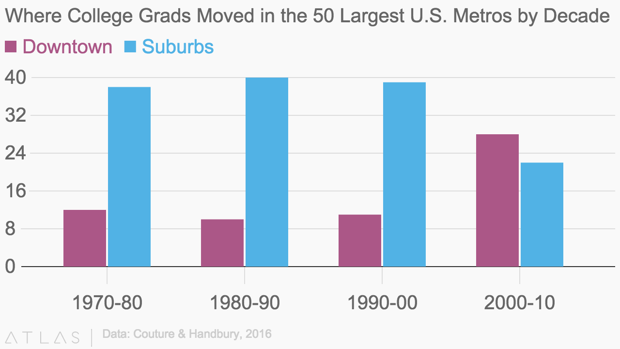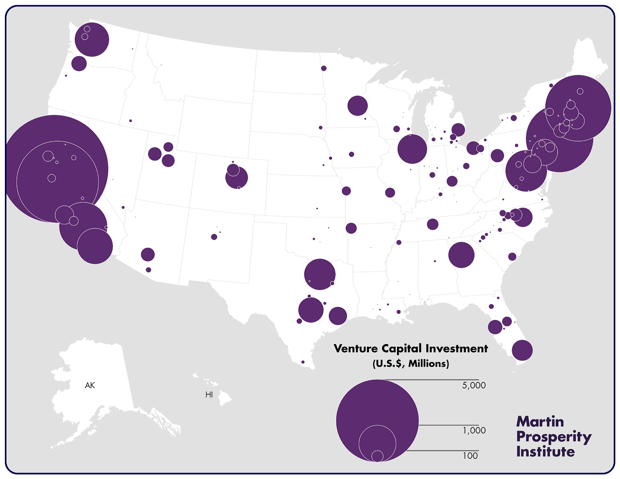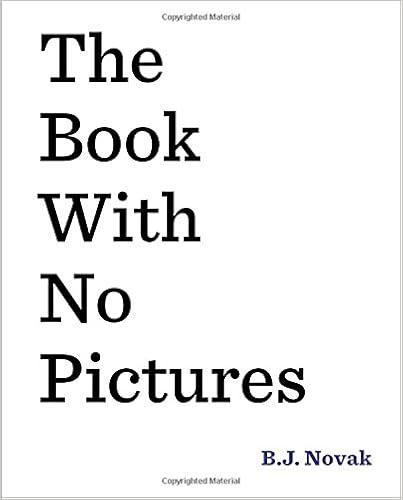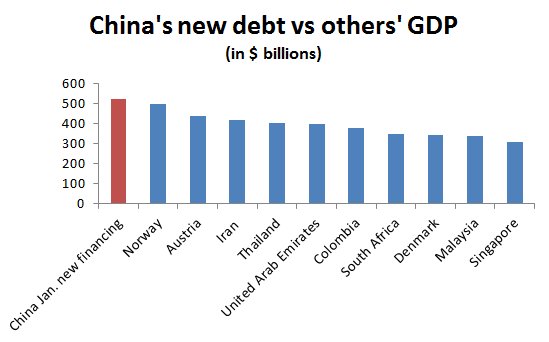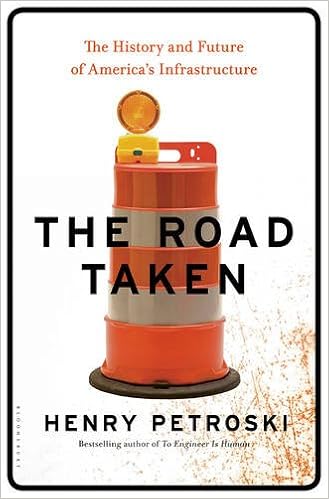Arup | Thoughts | Better evaluation of the qualitative https://t.co/fDnZT3ESiw— Dr.Steven D.Sanders (@DocEngineering) March 1, 2016
Monday, February 29, 2016
Engineering Moves Toward the Qualitative
Jeeva Wireless
Power from the Air https://t.co/Y0k3qQeqMm— Dr.Steven D.Sanders (@DocEngineering) March 1, 2016
Reducing Food Waste

About a third of the planet's food goes to waste - that's enough to feed two billion people. Check out the USDA App to help manage food-expiration reminders in the home.
Transurban Group
Australian company geared toward highway tolling in the era of highway tolling - link.
The Age of Automatic Replenishment Engineering
Amazon and Brita team up for Wi-Fi water pitchers https://t.co/5Gs0GRTVFi via @verge— Dr.Steven D.Sanders (@DocEngineering) February 29, 2016
Purdue Systems Collaboratory
Using a multidisciplinary approach to solve complex issues - website link.
Georgia Tech - Serve, Learn, Sustain
Unsafe Lead Levels in Tap Water Not Limited to Flint https://t.co/B0aGDVGBt6— Serve-Learn-Sustain (@GeorgiaTech_SLS) February 12, 2016
Sunday, February 28, 2016
Oscar Watching Party
Movie about water constrained world, climate change and 2016 presidential election is doing well tonight. @CNN pic.twitter.com/D3nozn9wpC— Dr.Steven D.Sanders (@DocEngineering) February 29, 2016
Helping the Public Sector with Public Meetings
Great turnout at our seminar for effective public meetings! Thank you to all who joined us today @CityOfDallas pic.twitter.com/PuVR5P6ZpU— Freese and Nichols (@FreeseNichols) February 25, 2016
Visual Marketing - Kimley Horn
Good Instagram example of telling your stories with pictures and people.
WalmartLabs Open-Sources OneOps PaaS
WalmartLabs Open-Sources OneOps PaaS: WalmartLabs open-sources OneOps, the platform behind walmart.com. OneOps is a cross-cloud deployment and orchestration platform with a visual infrastructure builder aimed at making it easier to build applications that can run on any cloud.
Managed by Q
Rethinking office management/cleaning - link to the corporate site. Q as the Q (Quartermaster) from Jame Bond Legend.
A fascinating profile of the company is in the current issue of the New York Times magazine.
The "Good Jobs Strategy" in action - - paying employees a living wage and still making money.
A fascinating profile of the company is in the current issue of the New York Times magazine.
The "Good Jobs Strategy" in action - - paying employees a living wage and still making money.
Engineering Voice Control
Giving Amazon Echo the keys to the CNET Smart Home https://t.co/zsQgtZGCWP via @CNET— Dr.Steven D.Sanders (@DocEngineering) February 28, 2016
Saturday, February 27, 2016
Moving Back to Humans
Mercedes-Benz swaps robots for people on its assembly lines https://t.co/kICiWczgDo— Dr.Steven D.Sanders (@DocEngineering) February 28, 2016
Concrete Economics
Concrete economics - Hamilton and history as a guide to infrastructure renewal. https://t.co/jvCS7QC6ZF @ASCE— Dr.Steven D.Sanders (@DocEngineering) February 27, 2016
Presentation Practice Tip
For your next presentation, tape the practice runs (you should always do this). Watch the practice with the audio off. Focus on your body language. What story are you telling with your body language?
Cleanup Artist - Engineer/Investor Matthew Vinefield.
A link to his real estate investment company. From his website:
Matt Winefield is an engineer and businessman who has been supporting the redevelopment of contaminated properties since 1989. After redeveloping oil fields, refineries, and service stations for the California oil industry (Chevron, et al.), Matt formed his first engineering consultancy in 1997. In 2005, he added a separate engineering staffing firm to his portfolio. These two companies were successfully sold to a private equity partnership. Throughout his career Matt has added value to blighted and contaminated properties using effective agency negotiations and cost-conscious environmental strategies, thereby maximizing return on investment. He also specializes in obtaining environmental cost recovery from third parties such as government agencies, historical insurers, and potentially responsible parties. He is currently responsible for due diligence and remediation oversight of environmentally-challenged sites for a portfolio that includes outside investors. The investors are extracting considerable arbitrage from contaminated properties in premium, infill locations.
Matt holds a BS in civil engineering from the University of Illinois at Urbana-Champaign, an MS in environmental engineering from California State University Long Beach, and an MBA from the UCLA Anderson School of Management. He also maintains an active California Professional Engineering license, and belongs to several real estate, investment, and banking professional organizations.
Matt Winefield is an engineer and businessman who has been supporting the redevelopment of contaminated properties since 1989. After redeveloping oil fields, refineries, and service stations for the California oil industry (Chevron, et al.), Matt formed his first engineering consultancy in 1997. In 2005, he added a separate engineering staffing firm to his portfolio. These two companies were successfully sold to a private equity partnership. Throughout his career Matt has added value to blighted and contaminated properties using effective agency negotiations and cost-conscious environmental strategies, thereby maximizing return on investment. He also specializes in obtaining environmental cost recovery from third parties such as government agencies, historical insurers, and potentially responsible parties. He is currently responsible for due diligence and remediation oversight of environmentally-challenged sites for a portfolio that includes outside investors. The investors are extracting considerable arbitrage from contaminated properties in premium, infill locations.
Matt holds a BS in civil engineering from the University of Illinois at Urbana-Champaign, an MS in environmental engineering from California State University Long Beach, and an MBA from the UCLA Anderson School of Management. He also maintains an active California Professional Engineering license, and belongs to several real estate, investment, and banking professional organizations.
Why are engineering graduates so prominent in violent extremist movements?
Engineers of Jhad by Gambetta/Hertog @FT review today. "Massive over representation of engineers as terrorists" pic.twitter.com/E5zOf5Xo37— Dr.Steven D.Sanders (@DocEngineering) February 27, 2016
Buffett Is Thinking About Climate Change
Link the the Annual Report referenced in the Tweet.Warren Buffett likening climate change to the Y2K thing is probably going to piss people off. https://t.co/7AtlOViY2r— Joseph Weisenthal (@TheStalwart) February 27, 2016
Views on Innovation from China
'In the Eye of a Tornado': Views on Innovation from China by a16z via #soundcloud https://t.co/99BSep1Uic— Dr.Steven D.Sanders (@DocEngineering) February 27, 2016
Leadership Is About Process
From The New Yorker this week by Joshua Rothman - Shut Up and Sit Down: Why the leadership industry rules:
"Last year, Danny Boyle and Aaron Sorkin's film "Steve Jobs" relied almost exclusively on the trait model of leadership: it suggested that Jobs succeeded because of his powerful personality. Watching the film, though, you couldn't figure out what Jobs actually did. By contrast, if you read a detailed, process-oriented account of Job's career ("Becoming Steve Jobs," by Brent Schlender and Rick Tetzeli, is particularly good), it's clear that Jobs was a master of the leadership process. Time and time again, he gathered intelligence about the future of technology; surveyed the competition and refined his taste; set goals and assembled teams; tracked projects, intervening into even apparently trivial decision; and followed through, considering the minute details of marketing and retail. Although Jobs had considerable charisma, his real edge was his thoughtful involvement in every step of an unusually expansive leadership process. In an almost quantitative sense, he simply led more than others did. (It helped, of course, that he had the right traits: Job's intervention worked becasue he was a genius.)

"Last year, Danny Boyle and Aaron Sorkin's film "Steve Jobs" relied almost exclusively on the trait model of leadership: it suggested that Jobs succeeded because of his powerful personality. Watching the film, though, you couldn't figure out what Jobs actually did. By contrast, if you read a detailed, process-oriented account of Job's career ("Becoming Steve Jobs," by Brent Schlender and Rick Tetzeli, is particularly good), it's clear that Jobs was a master of the leadership process. Time and time again, he gathered intelligence about the future of technology; surveyed the competition and refined his taste; set goals and assembled teams; tracked projects, intervening into even apparently trivial decision; and followed through, considering the minute details of marketing and retail. Although Jobs had considerable charisma, his real edge was his thoughtful involvement in every step of an unusually expansive leadership process. In an almost quantitative sense, he simply led more than others did. (It helped, of course, that he had the right traits: Job's intervention worked becasue he was a genius.)

OpenHazards Group
Consultancy for resiliency planning - - good example of the type of "Plan B" services and opportunities embedded in a riskier world.


Friday, February 26, 2016
The Best Graphic on the Oil Bust
Watch Five Years of Oil Drilling Collapse in Seconds https://t.co/gk1XSqfnAt via @business— Dr.Steven D.Sanders (@DocEngineering) February 27, 2016
A Source for Open Data
Checking out "Top 20 Open Data sources" on Data Science Central: https://t.co/7wkw1O1paG— Dr.Steven D.Sanders (@DocEngineering) February 26, 2016
Engineering Success - Radical Engagement with Society
How companies succeed through radical engagement | McKinsey & Company https://t.co/g8Pi5VnJ9x— Dr.Steven D.Sanders (@DocEngineering) February 26, 2016
Engineer of the Week - - Rosalee Ramer
From The New Yorker by Ian Frisch - Keeping Up with the Country's Youngest Female Monster-Truck Driver:
"On a Thursday afternoon in late January, Rosalee Ramer hustled across the Georgia Institute of Technology campus, where she is a freshman studying mechanical engineering. She had to finish packing and get to the airport. She needed to bring her reading assignment for English class, her multivariable-calculus homework, and the first two chapters from her mechanical-physics textbook. Plus her laptop. “And my charge cord. I cannot forget my charge cord,” she said.
"On a Thursday afternoon in late January, Rosalee Ramer hustled across the Georgia Institute of Technology campus, where she is a freshman studying mechanical engineering. She had to finish packing and get to the airport. She needed to bring her reading assignment for English class, her multivariable-calculus homework, and the first two chapters from her mechanical-physics textbook. Plus her laptop. “And my charge cord. I cannot forget my charge cord,” she said.
She also had to drop off some sketches to a friend with graphic-design skills who had offered to digitize some art for her. “They were ideas for my new monster-truck shirt,” she explained later. Last summer, after she turned eighteen, Ramer signed on with Monster Jam, the largest national circuit for monster-truck racing. The attendance at Monster Jam events regularly surpasses fifty thousand. Her friend wasn’t in her room, so Ramer slipped the sketches and a note under her door. At the airport, she called her father, who had just arrived in Phoenix, for that weekend’s monster-truck show, where they would both be competing. “I did my math homework on the plane to Arizona, just to get it over with,” she told me. “I’ve gotten pretty good at doing homework on planes.”"
Why Build a Roundabout?
Why did the intersection of KY 363 and KY 1006 need to be rebuilt and was a roundabout a good fit? Here is a video showing traffic backup before the roundabout was built and after. Note how far the traffic backed up at the 4 way stop intersection and note the lack of traffic backup at the constructed roundabout. Both of these videos were filmed on a Tuesday at 5 pm to give a good comparison of traffic before and after on a similar day with similar traffic during the peak hour.
Posted by London KY Roundabout - KY 363 / KY 1006 on Monday, February 22, 2016
Thursday, February 25, 2016
Google Looks at Urban Design
Google’s Next Moonshot: Lining City Streets With Wi-Fi Hubs https://t.co/4CY1nD5AMu via @WIRED— Dr.Steven D.Sanders (@DocEngineering) February 26, 2016
MIcrosoft Looks Toward Civil Engineering
From an article on Microsoft's design thinking:
"De los Reyes wasn’t proposing that Microsoft become a sidewalk company. He was proposing a metaphor. He was hoping to find the digital world’s equivalent of the curb cut, something elegant that let everyone live a little easier. At a meeting of Shum’s top deputies, de los Reyes mooted this idea of making Microsoft’s design accessible to all. On its face, this idea flattered Microsoft’s culture. Remember how Windows famously let you adjust the setting on almost anything you wanted, while Apple didn’t? That wasn’t an accident, but rather the perfect expression of Microsoft’s abiding belief, descended from the great garage-hacker Bill Gates, that users should be able to adjust everything they touched as they saw fit. So for Microsofties, it was only natural to think that users, including the disabled, should have as many settings as they wanted. But de los Reyes was after something more ambitious. Kat Holmes, there at the meeting with Shum, supplied another puzzle piece."
"De los Reyes wasn’t proposing that Microsoft become a sidewalk company. He was proposing a metaphor. He was hoping to find the digital world’s equivalent of the curb cut, something elegant that let everyone live a little easier. At a meeting of Shum’s top deputies, de los Reyes mooted this idea of making Microsoft’s design accessible to all. On its face, this idea flattered Microsoft’s culture. Remember how Windows famously let you adjust the setting on almost anything you wanted, while Apple didn’t? That wasn’t an accident, but rather the perfect expression of Microsoft’s abiding belief, descended from the great garage-hacker Bill Gates, that users should be able to adjust everything they touched as they saw fit. So for Microsofties, it was only natural to think that users, including the disabled, should have as many settings as they wanted. But de los Reyes was after something more ambitious. Kat Holmes, there at the meeting with Shum, supplied another puzzle piece."
Term of the Week - The Blue Economy
Report from Michigan on the role of water as an engine of economic growth and innovation.
City of Arlington, Texas Goes High Tech With Sewer
City, UTA Engineers Use High-Tech Tools to Evaluate Sewer Pipelines https://t.co/pLcCwwTtxY via @cityofarlington— Dr.Steven D.Sanders (@DocEngineering) February 24, 2016
Wednesday, February 24, 2016
Understanding Your New Graduate Engineer
Millennials: Burden, blessing, or both? | McKinsey & Company https://t.co/ymXK4cCk2F— Dr.Steven D.Sanders (@DocEngineering) February 24, 2016
Burgess & Niple Wins Award!!
Tremont project up for award https://t.co/eK8utvNxjp via @thisweeknews— Dr.Steven D.Sanders (@DocEngineering) February 24, 2016
Did Anyone See the Big Short of Fracking?
Evan Soltas: Bad Energy Debt and the Banks https://t.co/yVFEMlnNoZ— Dr.Steven D.Sanders (@DocEngineering) February 24, 2016
Engineers as Creators of Needs and Desires
I just completed an outstanding article in the current issue of The Chronicle - Building a Bridge Between Engineering and Humanities by Julio Ottino and Gary Morson, both of Northwestern. From the article:
"Acquiring the habit of overcoming habitual perception is one process that brings engineering and the arts together. It is how great writers impact human experience in new ways, and it is how engineers innovate. Technology does not proceed along a preordained single path, as one might suppose from a textbook or problem-solving approach. Like literature, engineering sometimes works not by satisfying recognized needs but by creating the needs it satisfies. And that is also like literature: Tolstoy did not satisfy someone's need by a novel call Anna Karenina."
Tuesday, February 23, 2016
TechTown Detroit
Join us February 25th: Garage talk @ Tech Town 👉 Entrepreneur Lessons from the experts https://t.co/IIHK424AAb pic.twitter.com/rUNXasRC08— TechTown Detroit (@techtowndetroit) February 23, 2016
Customers, Not Technologies
Which MBA?: Academic View: Future uncertain https://t.co/HD0Oxmes4L via @TheEconomist— Dr.Steven D.Sanders (@DocEngineering) February 23, 2016
Monday, February 22, 2016
Google Looks at Urban Design
Sidewalk Labs hires 'dream team' to tackle city design in the self-driving age https://t.co/3YRNqVjBzC via @verge— Dr.Steven D.Sanders (@DocEngineering) February 22, 2016
Sunday, February 21, 2016
An Engineer for Engineers Week
Obituary: Jim Nichols, prominent Fort Worth engineer, dies at 92 https://t.co/9KFYNFcMtA— Dr.Steven D.Sanders (@DocEngineering) February 21, 2016
The Age of US Water Infrastructure
Aging infrastructure is one of the biggest contributors to rising water rates. #TxWater https://t.co/lnKEJE1KhY— NTMWD (@NTMWD) February 21, 2016
How I Judge Twitter - Did I Learn Something Meaningful?
And the answer is yes.
More than half the world’s population has gone urban. This #map captures it brilliantly. https://t.co/4dgDEja0nL pic.twitter.com/nhKsw2MXOB— Woolpert (@woolpert) January 12, 2016
Ask for Problems, Not Solutions
One part of leadership deals with how you approach the following:
Think about your organization. Is the culture "Don't bring me problems; bring me solutions" - - where an advocacy dominated culture dampens constructive inquiry? Or does the culture allow dissenters that put forth problems were information collection and inquiry are at the same level of advocacy?
Check out Originals: How Non-Conformists Move the World by Adam Grant of Wharton.
Don't bring me __________________;
bring me _______________________
Think about your organization. Is the culture "Don't bring me problems; bring me solutions" - - where an advocacy dominated culture dampens constructive inquiry? Or does the culture allow dissenters that put forth problems were information collection and inquiry are at the same level of advocacy?
Check out Originals: How Non-Conformists Move the World by Adam Grant of Wharton.
Demand versus Supply Side Engineering
Many "wicked" problems have demand side problems that we attempt to solve with supply side strategies and tactics. Water conservation and transportation are just two examples of problems that we attempt to fix by only working in the supply side solution space.
Maybe drug control, water conservation, and transportation planning are all the same type of problem.

Maybe drug control, water conservation, and transportation planning are all the same type of problem.

In Praise of Engineering Polymaths
From the New York Times Book Review today - - a review of Inventology: How We Dream Up Things That Change the World by Pagan Kennedy and Originals: How Non-Conformists Move the World by Adam Grant - - written by Clive Thompson:
"Kennedy also argues that inventors are often polymathic connectors "who - by luck, design or some quirk of personality - are able to bring together knowledge from several fields." In her most surprising chapter she examines InnoCentive, a website where companies post problems they cannot solve, listing a financial reward for anyone who helps out. It turns out that people most likely to solve problems on InnoCentive are outsiders to the problem's field. For example, food company was struggling to make a health shake but found its formula kept producing a revolting color. The person who devised a solution wasn't in the area of food at all: He was a marine scientist, who had seen the same thing happen in ocean water and suspected (correctly) that the color was caused by iron. He spent a single weekend writing up a solution and who InnoCentive's $25,000 prize for it."
"Kennedy also argues that inventors are often polymathic connectors "who - by luck, design or some quirk of personality - are able to bring together knowledge from several fields." In her most surprising chapter she examines InnoCentive, a website where companies post problems they cannot solve, listing a financial reward for anyone who helps out. It turns out that people most likely to solve problems on InnoCentive are outsiders to the problem's field. For example, food company was struggling to make a health shake but found its formula kept producing a revolting color. The person who devised a solution wasn't in the area of food at all: He was a marine scientist, who had seen the same thing happen in ocean water and suspected (correctly) that the color was caused by iron. He spent a single weekend writing up a solution and who InnoCentive's $25,000 prize for it."
Climate Change and the Importance of One Water
Storm Water, Long a Nuisance, May Be a Parched California’s Salvation https://t.co/HYy0EuKHzc— Dr.Steven D.Sanders (@DocEngineering) February 21, 2016
Gabie Figueroa - An Engineer for Engineers Week
For Players in a New Women’s League, a Rink Isn’t the Only Office https://t.co/agJ6MZ68jJ— Dr.Steven D.Sanders (@DocEngineering) February 21, 2016
Thinking About Trump - New Mental Models for Thinking Different is Impossible
Marginal Revolution https://t.co/uymMBDjumh via @sharethis— Dr.Steven D.Sanders (@DocEngineering) February 21, 2016
Saturday, February 20, 2016
Coming to Your Next City Council Meeting - Crowds on Demand
"Citizens" who speak at town meetings are hired, scripted actors https://t.co/sywa3T9K7V— Dr.Steven D.Sanders (@DocEngineering) February 20, 2016
Your Next Presentation
"Giving a Presentation? Three Ways to Leave Your Fingerprint" by @JackWelchMBA on @LinkedIn https://t.co/E74i5MlTGn— Dr.Steven D.Sanders (@DocEngineering) February 20, 2016
Texas Water Wars
From the Texas Tribune - In Major Case, Wins for Ranchers is Loss for Cities:
"The Texas Supreme Court on Friday handed a victory to farmers, ranchers and other longstanding water rights holders by declining to take up a Brazos River case with widespread implications for future water battles in drought-prone Texas.
Denying a state petition for review, the justices left in place a lower court’s ruling that said Texas cannot give special treatment to cities or power generators over more “senior” water rights holders on parched rivers — even if the state declares it necessary to protect the “public health, safety and welfare.”
That means some cities, power generators or others with more “junior” river rights would need to pay up or go thirsty when severe drought strikes."
The Great Productivity Slowdown
From Edward Luce's column in the Financial Times today - States of Decline - in which he reviews The and Fall of American Growth: The US Standard of Living Since the Civil War by Robert Gordon:
"With the exception of the 1990s, when the digital revolution hit our desktops, productivity growth has slowed sharply in the past have century. It dropped from an average of 2.7 percent a year in per1950s and 1960s to below 1 percent in the last decade. As a result, income growth has also slowed. The median US household income in 2014 was $50,600. If we had maintained pre-1970 productivity, it would have been $97,500. We are already into a slowdown that, in Gordon's view, is likely to slow further."
If the iPhone can't budge, what can?
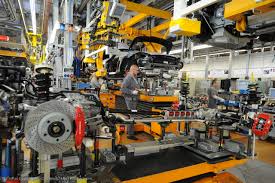
"With the exception of the 1990s, when the digital revolution hit our desktops, productivity growth has slowed sharply in the past have century. It dropped from an average of 2.7 percent a year in per1950s and 1960s to below 1 percent in the last decade. As a result, income growth has also slowed. The median US household income in 2014 was $50,600. If we had maintained pre-1970 productivity, it would have been $97,500. We are already into a slowdown that, in Gordon's view, is likely to slow further."
If the iPhone can't budge, what can?
Friday, February 19, 2016
Follow #Build100
Here's our latest #Build100 post on how engagement empowers communities to become promoters & advocates of projects: https://t.co/XaTrITpnGC— Bechtel Corporation (@Bechtel) February 17, 2016
Thinking About Your Next Public Meeting
9 Annoying Things That Ruin Community Meetings, According to Absolutely Everyone https://t.co/waxXCsTCYX— Dr.Steven D.Sanders (@DocEngineering) February 20, 2016
GE’s Big Bet on Data and Analytics
GE’s Big Bet on Data and Analytics: An MIT SMR case study looks at how GE is remaking itself from a traditional manufacturer into a leader of the Industrial Internet.
How Warm Were You in 2015?
How Much Warmer Was Your City in 2015? https://t.co/GoRzUQfVxM— Dr.Steven D.Sanders (@DocEngineering) February 19, 2016
Thursday, February 18, 2016
Brooklyn's Tallest
73-Story Tower Would Be Brooklyn’s Tallest by Far https://t.co/8AtUMZm74H— JDS Development (@JDSDevelopment) February 17, 2016
Wednesday, February 17, 2016
Smart Cities Council
Cities want to get smarter, so why is it taking so long? (What you can do to move faster) - Main https://t.co/T2FDSp0Hrn via @AddThis— Dr.Steven D.Sanders (@DocEngineering) February 18, 2016
Bridj
Is Kansas City's New On-Demand Van the Future of Low-Density Transit? https://t.co/V4b5JXDbIW— Dr.Steven D.Sanders (@DocEngineering) February 18, 2016
Tuesday, February 16, 2016
Smart Cities Will Need to Reorganize
Why Miami’s Public Works & Transit Department Merger is a Game-Changer https://t.co/iZPn5Q6JQF— Dr.Steven D.Sanders (@DocEngineering) February 16, 2016
Monday, February 15, 2016
You Should Have Had Those Dance Lessons
Artistic
Hobby
|
Odds
for Nobel Prize winners relative to typical scientist
|
Music – playing an instrument, composing, conducting
|
2x greater
|
Arts – drawing, painting, printmaking, sculpting
|
7x greater
|
Crafts – woodworking, mechanics, electronics, glassblowing
|
7.5x greater
|
Writing – poetry, plays, novels, short stories, essays, popular books
|
12x greater
|
Performing – amateur actor, dancer, magician
|
22x greater
|
From the Originals: How Non-Conformists Move the World by Adam Grant. The same holds true for entrepreneurs and inventors. If you started a business, there is a good chance that your hobbies involved painting, drawing, architecture, sculpture, and/or literature. Curiosity, aptitude, and an openness to looking at science and business in new ways is critical for exceptional success. Those with the flexibility, adaptability, and passion to integrate science, engineering, and the arts are the rare gems.

Condition One - Rethinking Storytelling
Immersive Video Startup Condition One Demos 360-Degree Trailer For Oculus Rift https://t.co/TBC6fVraFw via @techcrunch— Dr.Steven D.Sanders (@DocEngineering) February 16, 2016
Thinking About Multiple Regression Analysis
The Crusade Against Multiple Regression Analysis https://t.co/fHDcTjVdyM via @edge— Dr.Steven D.Sanders (@DocEngineering) February 15, 2016
Changing of the Guard
Freese and Nichols selects Brian Coltharp as next CEO https://t.co/Awmd7gce8E pic.twitter.com/Y5iOJsPti1— Freese and Nichols (@FreeseNichols) February 11, 2016
Engineering Greater Productivity
“15 Things Insanely-Productive People Do Differently” by @BenjaminPHardy https://t.co/W6gNjTTcSF— Dr.Steven D.Sanders (@DocEngineering) February 14, 2016
Highly Creative Engineers Need Plasticity, Divergence, and Convergence
From Wired to Create: Unraveling the Mysteries of the Creative Mind by Scott Barry Kaufman and Carolyn Gregoire:
"Creative people not only cultivate a wide array of attributes but are also able to adapt - even flourish - by making the best of the wide range of traits and skills that they already possess. This ability to adapt to changing circumstance with fluidity and flexibility is reflected in three main "super-factors" of personality that are highly correlated with creativity: plasticity, divergence, and convergence. Plasticity is characterized by the tendency to explore and engage with novel ideas, objects, and scenarios. Characteristics like openness to experience, high energy, and inspiration are all related to each other, forming the core of this drive for exploration. Divergence reflects a nonconformist mind-set and independent thinking and is related to impulsivity and lower levels of agreeableness and conscientiousness. Finally, convergence refers to the ability to conform, put in the hard effort necessary to exercise practicality, and make ideas tenable. Convergence consists of high conscientiousness, precision, persistence, critical sense, and sensitivity to the audience. Individually and together, these diverse qualities encourage the development and expression of creativity."
"Creative people not only cultivate a wide array of attributes but are also able to adapt - even flourish - by making the best of the wide range of traits and skills that they already possess. This ability to adapt to changing circumstance with fluidity and flexibility is reflected in three main "super-factors" of personality that are highly correlated with creativity: plasticity, divergence, and convergence. Plasticity is characterized by the tendency to explore and engage with novel ideas, objects, and scenarios. Characteristics like openness to experience, high energy, and inspiration are all related to each other, forming the core of this drive for exploration. Divergence reflects a nonconformist mind-set and independent thinking and is related to impulsivity and lower levels of agreeableness and conscientiousness. Finally, convergence refers to the ability to conform, put in the hard effort necessary to exercise practicality, and make ideas tenable. Convergence consists of high conscientiousness, precision, persistence, critical sense, and sensitivity to the audience. Individually and together, these diverse qualities encourage the development and expression of creativity."
Air Amazon
Is local air cargo firm hauling Amazon deliveries? https://t.co/qw3QyUALl0 via @enquirer— Dr.Steven D.Sanders (@DocEngineering) February 14, 2016
The Apps for This Old House
[Infographic] The Ultimate App Guide For Carpenters https://t.co/2UEpb4ziCR— Dr.Steven D.Sanders (@DocEngineering) February 14, 2016
What Business is Ford In?
From the New York Times yesterday by David Gelles - Helping Ford Go Beyond the Car:
"Individual car ownership isn't going to stall overnight. The big carmakers are reporting record sales and profits. But to be competitive for the next hundred years, Ford will have to much more than just make cars, said Will Farrelly, who works on Ford's "smart mobility" teams in London. "We see these not as threats but opportunities for our businesses," he said."
"Individual car ownership isn't going to stall overnight. The big carmakers are reporting record sales and profits. But to be competitive for the next hundred years, Ford will have to much more than just make cars, said Will Farrelly, who works on Ford's "smart mobility" teams in London. "We see these not as threats but opportunities for our businesses," he said."
Data Visualization MOOC
Third edition of 'Infographics and Data Visualization' starts with more than 3,300 students: “Introduction to Infographics and Data Visualization,” the Knight Center for Journalism in the Americas’ successful Massive Open Online Course (or MOOC).
Sunday, February 14, 2016
Dallas Morning News Editorial Page Republican Endorcement
Editorial: We recommend John Kasich for GOP presidential nomination via @dallasnews https://t.co/qmsJec5BEP— Dr.Steven D.Sanders (@DocEngineering) February 14, 2016
Thinking About Data Visualization with the Whole Brain
The “Rules” of Data Visualization Get an Update https://t.co/I7sHMdhWEc via @NatGeo— Dr.Steven D.Sanders (@DocEngineering) February 14, 2016
An Engineer Looks at Kissing on Valentine's Day
From the Smithsonian - Why Do We Kiss?:
"While kissing, couples exchange 9 milliliters of water, 0.7 milligrams of protein, 0.18 mg of organic compounds, 0.71 mg of fats, and 0.45 mg of sodium chloride, along with 10 million to 1 billion bacteria, according to one accounting. Many pathological organisms can be transmitted through mouth-to-mouth contact, including those that cause colds and other respiratory viruses, herpes simplex, tuberculosis, syphilis and strep."

"While kissing, couples exchange 9 milliliters of water, 0.7 milligrams of protein, 0.18 mg of organic compounds, 0.71 mg of fats, and 0.45 mg of sodium chloride, along with 10 million to 1 billion bacteria, according to one accounting. Many pathological organisms can be transmitted through mouth-to-mouth contact, including those that cause colds and other respiratory viruses, herpes simplex, tuberculosis, syphilis and strep."

What I am Reading
New to the book bag:

- Wired to Create: Unraveling the Mysteries of the Creative Mind by Scott Barry Kaufman and Carol Gregoire
- A Crude Look at the Whole: The Science of Complex Systems in Business, Life, and Society by John H. Miller
- Originals: How Non-Conformists Move the World by Adam Grant
- The Industries of the Future by Alec Ross
- Transforming Institutions: Undergraduate STEM Education for the 21st Century by Gabriela Weaver et al.
- Betting the Farm on a Drought: Stories from the Front Lines of Climate Change by Seamus McGraw
- Uncommon Genius: How Great Ideas are Born by Denise Shekerjian
- Pride and Prejudice and Zombies by Jane Austen (sort of)

Great Writers are Great Readers
From an interview with Leonard Joseph, a principal with the engineering consulting firm Thornton Tomasetti. The interview was in the current issue of Civil Engineering.
"It is important to read broadly and critically and to learn from other people's writing. If you are reading a newspaper, you can notice that the lead paragraph has the key points, so you should never "bury the lead." We remind our engineers to start with an executive summary when they write long reports. Looking at articles in newspapers, magazines, and books, consider whether they are engaging and how they could have been better written. I often read articles and find myself wishing they had sidebar or provided basic information; your brain should always be engaged in recognizing whether there is something missing or if something could have been said better. You should read enough to understand distinctions among different kinds of writing and how they address targeted audiences."

"It is important to read broadly and critically and to learn from other people's writing. If you are reading a newspaper, you can notice that the lead paragraph has the key points, so you should never "bury the lead." We remind our engineers to start with an executive summary when they write long reports. Looking at articles in newspapers, magazines, and books, consider whether they are engaging and how they could have been better written. I often read articles and find myself wishing they had sidebar or provided basic information; your brain should always be engaged in recognizing whether there is something missing or if something could have been said better. You should read enough to understand distinctions among different kinds of writing and how they address targeted audiences."

Understanding Who You Are Designing For
The Commute of the Future? Ford Is Working on It https://t.co/Pq9k1z6lDm— Dr.Steven D.Sanders (@DocEngineering) February 14, 2016
Saturday, February 13, 2016
Sci-Hub
Sci-Hub, a Site With Open and Pirated Scientific Papers @slashdot - https://t.co/KaT7HWLeyv— Dr.Steven D.Sanders (@DocEngineering) February 13, 2016
The Rise and Warning of Smart TV
When your "Smart" appliance has voice recognition, who is listening on the other end? Note from Samsung regarding their SmartTV. The rise of innovative technology also produces the rise of innovative marketing. The two go hand in hand.
"Please note that when you watch a video or access applications or content provided by a third-party, that provider may collect or receive information about your SmartTV (e.g., its IP address and device identifiers), the requested transaction (e.g., your request to buy or rent the video), and your use of the application or service. Samsung is not responsible for these providers’ privacy or security practices. You should exercise caution and review the privacy statements applicable to the third-party websites and services you use."
"Please note that when you watch a video or access applications or content provided by a third-party, that provider may collect or receive information about your SmartTV (e.g., its IP address and device identifiers), the requested transaction (e.g., your request to buy or rent the video), and your use of the application or service. Samsung is not responsible for these providers’ privacy or security practices. You should exercise caution and review the privacy statements applicable to the third-party websites and services you use."
Word of the Week - Oilmageddon
As in (source link):
A CNBC article posted Friday as the top headline on the Drudge Report warned that the global economy is trapped in a “death spiral” dubbed by Citibank strategist Jonathan Stubb as “Oilmageddon” – referring to the dramatic drop in world oil prices and the possibility of a global economic meltdown, or “Armageddon.”
A CNBC article posted Friday as the top headline on the Drudge Report warned that the global economy is trapped in a “death spiral” dubbed by Citibank strategist Jonathan Stubb as “Oilmageddon” – referring to the dramatic drop in world oil prices and the possibility of a global economic meltdown, or “Armageddon.”
Fracking, Earthquakes, and Texas Dams
UT Arlington researcher developing framework to detect damage to dams from seismic activity - https://t.co/zI3d4FF6gi via @sharethis— Dr.Steven D.Sanders (@DocEngineering) February 13, 2016
The Lewisville Lake Saga Continues
Cities, environmental groups protesting planned gas drilling at Lewisville Lake https://t.co/Ns6Q7o1m9y— Dr.Steven D.Sanders (@DocEngineering) February 13, 2016
Who Marries Engineers?
This Chart Shows Who Marries CEOs, Doctors, Chefs, and Janitors https://t.co/hgyJU6dcoZ— Dr.Steven D.Sanders (@DocEngineering) February 13, 2016
A Paragraph to Ponder
From the Wall Street Journal today by Charles Murray - Trump's America:
"Then things started to change. For white working-class men in their 30s and 40s - what should be the prime decades for working and raising a family - participation in the labor force dropped from 96% in 1968 to 79% in 2015. Over the same period, the portion of these men who were married dropped from 86% to 52%."
"Then things started to change. For white working-class men in their 30s and 40s - what should be the prime decades for working and raising a family - participation in the labor force dropped from 96% in 1968 to 79% in 2015. Over the same period, the portion of these men who were married dropped from 86% to 52%."
Friday, February 12, 2016
Engineering in a Multi-Screen World
Embracing technological change, Italian style https://t.co/GpgxBy4muN via @sharethis— Dr.Steven D.Sanders (@DocEngineering) February 12, 2016
AssetMax
Ever wonder why there are small rocks on your asphalt parking lot? Here's what they are -> https://t.co/xiJ0WZULPU pic.twitter.com/nIfMBBdAMy— AssetMax (@TheAssetMax) November 4, 2015
Engineer Ratliff vs. Lawyer Rinaldi in Dallas House Race
Old Rivals Meet Again in Dallas House Race https://t.co/LkMdhsWgyb via @TexasTribune— Dr.Steven D.Sanders (@DocEngineering) February 13, 2016
The Russian School of Math
RSM leading the The Math Revolution. @TheAtlantic https://t.co/kZ1pBHyGVd— Russian Math School (@whyrussianmath) February 9, 2016
Eleven Signs a City Will Succeed
From James Fallows in the current issue of The Atlantic - How America Is Putting Itself Back Together:
- Divisive national politics seem a distant concern.
- You can pick out the local patriots.
- Public-private partnerships are real.
- People know the civic story.
- They have a downtown.
- They have a research university.
- They have, and care about, a community college.
- They have unusual schools.
- They make themselves open.
- They have big plans.
- They have craft breweries.
The Two Pipe Solution?
Why Not Just Build New Pipes in Flint? https://t.co/qqDAK2ipgf— Dr.Steven D.Sanders (@DocEngineering) February 11, 2016
Thursday, February 11, 2016
Inside the Hyperloop
A Behind-the-Scenes Tour of Hyperloop Technologies https://t.co/CTwK6Q8CTA— Dr.Steven D.Sanders (@DocEngineering) February 12, 2016
What are the 18 Things Highly Creative Engineers Do Differently?
18 Things Highly Creative People Do Differently https://t.co/mBbuVHg7uh via @HPLifestyle— Dr.Steven D.Sanders (@DocEngineering) February 11, 2016
Business Is Both Art and Science
From the current issue of the Dallas Business Journal in an interview with J.C. Penney CEO Marvin Ellison:
"We're great on the art: The merchandising, the presentation, the design. I don't think you can go into any of our stores and find a competitor that's better than we are at the presentation of our Sephora inside J.C. Penney or our private brands like Liz Claiborne.
We're not great at science. Replenishment of goods, analyzing the data, creating a seamless connection between brick and mortar and digital and communication in a modern way to customers."
"We're great on the art: The merchandising, the presentation, the design. I don't think you can go into any of our stores and find a competitor that's better than we are at the presentation of our Sephora inside J.C. Penney or our private brands like Liz Claiborne.
We're not great at science. Replenishment of goods, analyzing the data, creating a seamless connection between brick and mortar and digital and communication in a modern way to customers."
Placemeter
The world is watching Union Square. In Real Time! https://t.co/sBGKk18Fpm— Union Square (@UnionSquareNY) February 10, 2016
Wednesday, February 10, 2016
Canada Digs Into Infrastructure to Boost Ailing Economy
Canada Digs Into Infrastructure to Boost Ailing Economy: Toronto-based construction economist Alex Carrick says Canada survived the Great Recession of 2009 and 2010 better than any other G7 country thanks to its public-sector building program.
Better Engineering for the Aging - The Role of The Cultural Jammer
From the Washington Post - We're Lucky If We Get to be Old, Physician and Professor Believes:
"He named the approach the Eden Alternative — based on the idea that a nursing home should be less like a hospital and more like a garden — and it was replicated in hundreds of institutions in Canada, Europe, Japan and Australia as well as in all 50 U.S. states (the animal restriction in New York was voted down).
But despite glowing results where the Eden Alternative had been applied, most nursing homes still languished in the institutional-warehouse model.
Thomas calls himself a “cultural jammer” — someone who upturns orthodoxies and tries unproven methods, someone who throws spaghetti against the wall to see what will stick. So he tried something new.
He moved beyond nursing homes to set up small, intimate residences called Green Houses. With private bedrooms and bathrooms, they offered dignity and privacy. Their size had an unexpected effect."
"He named the approach the Eden Alternative — based on the idea that a nursing home should be less like a hospital and more like a garden — and it was replicated in hundreds of institutions in Canada, Europe, Japan and Australia as well as in all 50 U.S. states (the animal restriction in New York was voted down).
But despite glowing results where the Eden Alternative had been applied, most nursing homes still languished in the institutional-warehouse model.
Thomas calls himself a “cultural jammer” — someone who upturns orthodoxies and tries unproven methods, someone who throws spaghetti against the wall to see what will stick. So he tried something new.
He moved beyond nursing homes to set up small, intimate residences called Green Houses. With private bedrooms and bathrooms, they offered dignity and privacy. Their size had an unexpected effect."
Engineering and a Theory of NIMBYism
Wanted: A Better Definition of NIMBYism https://t.co/mLVEGBwEQ8— Dr.Steven D.Sanders (@DocEngineering) February 10, 2016
Engineering and the How To Video Movement
Big impacts for maintenance and repair activities - link to the story. Expect more growth in the 'How To Movement" as augmented reality and VR becomes fully embedded.
Tuesday, February 9, 2016
Supporting a Water Revolution
The White House is investing in water innovation for the first time: https://t.co/M42xqhQhXG by @cfishman via @FastCoExist— Dr.Steven D.Sanders (@DocEngineering) February 10, 2016
The World of Visualization Tools
Six of our favorite data visualization tools https://t.co/ZxLO3L4hyN via @clickz— Dr.Steven D.Sanders (@DocEngineering) February 9, 2016
Google DeepMind AI Navigates a Doom-Like 3D Maze Just By Looking
Google DeepMind AI Navigates a Doom-Like 3D Maze Just By Looking: Google DeepMind just entered the 90s. Fresh off their success in playing the ancient game of Go, DeepMind’s latest artificial intelligence can navigate a 3D maze reminiscent of the 1993 shooter game Doom.
Greater Urban Densification = Green Cities
The Key to Green Cities and Mindsets: Densification https://t.co/yPKQzDEz9I— Dr.Steven D.Sanders (@DocEngineering) February 8, 2016
Monday, February 8, 2016
An Engineer In the White House?
Bloomberg: I'm considering 2016 bid @CNNPolitics https://t.co/aKSDStUx3Z— Dr.Steven D.Sanders (@DocEngineering) February 9, 2016
Put Drones in the Coastal Erosion Toolbox
El Niño raises concerns about coastal erosion https://t.co/jYyjCPLKMj via @sdut— Dr.Steven D.Sanders (@DocEngineering) February 9, 2016
Is Socialism Good for Infrastructure Renewal and Civil Engineers?
Millennials heed the siren call of socialism https://t.co/W17ddGfiBk— Dr.Steven D.Sanders (@DocEngineering) February 8, 2016
Sunday, February 7, 2016
Engineers - Create a Skill Chart
“How To Invest In Yourself.” by @Jonwestenberg https://t.co/mxuzF4QT5e— Dr.Steven D.Sanders (@DocEngineering) February 8, 2016
Trending in AI
- There was more than $300 million in venture capital invested in AI startups in 2014, a 300% increase over the year before. (Bloomberg)
- By 2020, 85% of customer interactions will be managed without a human. (Gartner) From
- 32% of executives say voice recognition is the most-widely used AI technology in their business. (Narrative Science)
- By 2018, six billion connected devices will proactively ask for support. (Gartner)
- 44% of executives believe artificial intelligence’s most important benefit is “automated communications that provide data that can be used to make decisions.” (Narrative Science)
- By the end of 2018, “customer digital assistants” will recognize customers by face and voice across channels and partners. (Gartner)
- 80% of executives believe artificial intelligence improves worker performance and creates jobs. (Narrative Science)
- By 2020, smart agents will manage 40% of mobile interactions. (Gartner)
- Artificial intelligence will replace 16% of American jobs by the end of the decade. (Forrester)
- 15% of Apple phone owners users use Siri’s voice recognition capabilities. (BGR)
From Customer Think.
Subscribe to:
Posts (Atom)


